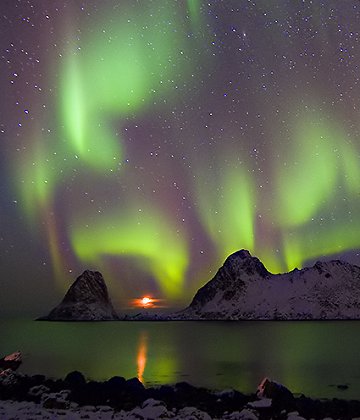SATELLITE FLYBYS APP: Turn your iPhone or iPod into a field-tested satellite tracker! Spaceweather.com presents the Satellite Flybys app. | | | 3D SUN FOR THE iPHONE: Imagine holding the entire sun in the palm of your hand. Now you can. A new iPhone app developed by NASA-supported programmers delivers a live global view of the sun directly to your cell phone. Get the full story from Science@NASA. NORTHERN LIGHTS: All week long, the Arctic Circle has been aglow with auroras. "The lights have been incredibly bright and active," says Øystein Lunde Ingvaldsen of Bø i Vesterålen, Norway. He took this picture on Feb. 17th: 
"This has been a very nice month for auroras," agrees Wioleta Zarzycka of Iceland, where coastal waters have been turning green in reflection of the sky above. The lights have even descended as far south as Scotland. "On Monday night, we had the first auroras I have seen here in years," reports Gordon Mackay of Campsie Fells. All this activity is a sign that the sun is coming back to life after a long, deep solar minimum. Sunspots have returned crackling with solar flares, and coronal mass ejections (CMEs) are once again buffeting Earth's magnetic field. NOAA forecasters estimate a 25% to 30% chance of more geomagnetic activity tonight. UPDATED: February Northern Lights Gallery
[previous Februarys: 2009, 2008, 2007, 2006, 2004, 2003, 2002] | 
